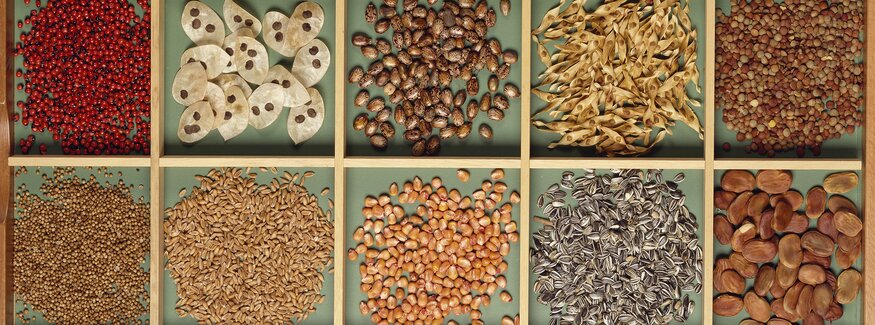USDA Honors Crop Diversity with 2nd Largest Seed Deposit
 Seeds still life in a box. (Photo by DeAgostini/Getty Images)
Seeds still life in a box. (Photo by DeAgostini/Getty Images)19 September 2016
19 September 2016 - the Svalbard Global Seed Vault’s doors were opened as 53 new boxes of seeds arrived from the United States Department of Agriculture (USDA). The shipment, which included nearly 20,000 accessions of different crops ranging from green bean to wheat to lovegrass, marks USDA’s second largest deposit to date and a step forward in securing the foundation of our world’s agriculture.
Safeguarding the agricultural biodiversity of the world is an urgent matter. We are currently losing diversity in the field and even in genebanks every day. While we do not know exactly how much genetic diversity has been lost in past years, some estimates say that since the 1900s, the United States alone has lost over 90% of all fruit and vegetable varieties. These statistics may seem daunting, but thankfully the Svalbard Global Seed Vault was created in 2008 to bar future loss.
Institutions and genebanks like that of USDA are taking proactive steps to ensure that the diversity we have managed to secure is properly conserved in both the genebank and the Svalbard Global Seed Vault. Today’s shipment is comprised of over 400 varieties and represents diversity from 147 countries, including species that originated from China, Turkey, Japan, Korea, Mexico, Brazil and the United States. These species are important not only for the people of the United States, but also for the regions in which they originated and the people around the world that use these crops - in one form or another - on a regular basis.
For example, nearly 3,000 of the accessions deposited today were of soybean (Glycine max), currently the most economically important bean in the world. The soybean, which is native to East Asia, has been used in China, Japan and Korea for thousands of years for medicinal and nutritional purposes. Soybean is essential, for example, in soy sauce, a staple for Asian cuisine. Introduced in the 1800s to the United States, soybean is of particular importance in the Southern and Midwestern regions of that country as well. Soybeans are an important source of vegetarian protein, cooking oil and animal feed in the United States and around the globe.
Another 2,000 accessions of Triticum aestivum - known commonly as wheat or bread wheat - were included in today’s deposit as well. Bread wheat, which originated in the Fertile Crescent over 10,000 years ago, first reached North America in the 16th Century with the Spanish missions and currently accounts for 95% of the world’s wheat production. Globally speaking, wheat is now the second most widely produced crop, just recently surpassed by maize. Wheat is grown from 67° north in Norway, Finland, and Russia to 45° south in Argentina, making it a truly global common good.
Other crops that made up the majority of today’s depost include:
- The common bean (a.k.a the green bean): native to the Americas and currently cultivated in 117 countries.
- Barley: an important crop used as fodder for livestock, in brewing beer, and featured prevalently in favorite Japanese dishes like Miso soup. Barley can also be grown in a number of tough environments where other grains cannot – from arctic latitudes and alpine altitudes to saline desert oases.
- Rice: the world’s most important grain for human nutrition, which supplies half of the world with 80% of their dietary intake. Rice thrives in diverse soils and climates, ranging from saline to alkaline to acidic soils and from tropical rainforests to mangrove swamps to arid deserts.
- And Eragrostis tef,: a species of lovegrass native to Ethipoia, first cultivated by the peoples of the Ethiopian highlands between 8000 and 5000 B.C.. Lovegrass, which is said to have the potential to improve both nutrition and food security in developing regions, is also being increasingly used in North America as a fodder crop, given its high yields.
Each variety deposited by USDA and the near-million other accessions secured inside the vault are of global importance today. These same varieties may also hold the necessary traits to adapt agriculture to the situations of tomorrow. Safeguarding crop diversity underpins the efforts to ensure food and nutritional security, despite the mounting pressures of climate change and a growing population.
“Participation in the Svalbard Global Seed Vault endeavor,” says representation from the USDA, “gave the United States a visible presence in the worldwide effort to safeguard the genetic diversity that underpins our food supply. The worldwide effort to preserve seeds is consistent with the philosophy that genetic resources are global assets.”
- Donate
Category: Svalbard Global Seed Vault
